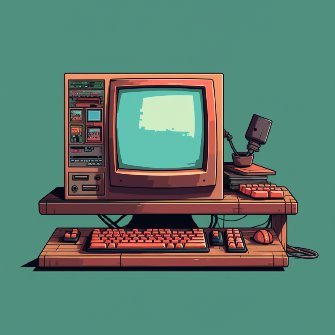
Dive into the Tech Building our Future Virtual Universe
Buckle up. Our future virtual universe, once relegated to science fiction, is rapidly becoming a reality. Forget clunky VR headsets – the metaverse promises a seamlessly integrated experience that blends the physical and digital worlds. But what exactly is it, and what cutting-edge technologies are making it possible?
TLDR: the metaverse is a network of interconnected virtual worlds where users can work, play, socialise, and create. Imagine a 3D-online space where your avatar roams freely, interacts with others, and even owns virtual property. It’s a world that transcends physical limitations, offering endless possibilities for creativity, collaboration, and entertainment.
The boundaries between the physical and digital are blurring, and our new virtual universe represents a new way of interacting with both. Whether attending a virtual concert that spills out onto the real world with synchronised lighting effects or collaborating on a design project with colleagues across the globe in a shared virtual space, the metaverse is poised to redefine the future of work, play, and connection.
The building blocks of the Metaverse
The metaverse is a complex ecosystem built on a confluence of cutting-edge technologies:
Virtual Reality (VR): VR headsets transport users into immersive, 3D environments, creating a true sense of “being there” within the metaverse. Advancements in VR hardware are making headsets lighter, more affordable, and offering higher resolutions for a truly realistic experience.
Augmented Reality (AR): AR overlays digital elements onto the physical world. Imagine attending a virtual concert projected onto your living room or collaborating with colleagues on a holographic 3D model. AR bridges the gap between the physical and digital, seamlessly integrating the metaverse into our daily lives.
Extended Reality (XR): XR encompasses both VR and AR, recognising the potential for a spectrum of experiences that blend the real and virtual worlds. As XR technology evolves, we can expect even more immersive and interactive experiences within the metaverse.
Blockchain: Blockchain technology, with its core principles of decentralisation and security, is ideally suited for the metaverse. Blockchain can be used to create and manage digital assets, like virtual land or in-game items, within the metaverse. Cryptocurrencies could become the primary means of exchange, facilitating a robust virtual economy.
High-Speed Connectivity: The metaverse demands seamless, real-time interaction. To achieve this, widespread adoption of high-speed internet, like 5G and its future iterations, is crucial. These technologies will ensure lag-free experiences and allow for massive numbers of users to interact simultaneously within the metaverse.
Artificial Intelligence (AI): AI plays a vital role in powering the metaverse. AI can be used to personalise user experiences, create realistic virtual characters (NPCs), and even moderate content within the metaverse.
Cutting the boundaries of work, play, and education
The metaverse has the potential to revolutionise various aspects of our professional lives. Imagine attending virtual meetings in collaborative 3D workspaces, complete with whiteboards and virtual sticky notes. With VR headsets, remote workers could feel like they’re physically present in the same room as their colleagues – boosting collaboration, eliminating in-person meetings/offices, and creating more dynamic work sessions.
For teams, the metaverse can transform education with immersive learning experiences by interacting with 3D models or participating in collaborative simulations. The possibilities for entertainment in the metaverse are endless. Attend virtual concerts, explore fantastical landscapes in VR games, or even own a virtual art gallery showcasing NFTs. The metaverse fosters new forms of social interaction. You can attend virtual parties, catch up with friends in a virtual cafe, or even form communities around shared interests. These virtual spaces allow for interaction and connection that transcends geographical limitations.
Turning toward technologies on the horizon
As the metaverse continues to develop, several exciting technologies are on the horizon:
Haptic Technology: Haptic technology allows users to feel virtual objects, adding a new layer of realism to metaverse experiences. Imagine feeling the texture of a virtual painting or the weight of a virtual object in your hand.
Brain-Computer Interfaces (BCIs): BCIs hold the potential for a more intuitive interaction with the metaverse. Imagine controlling your avatar directly with your thoughts or experiencing virtual worlds with a level of detail that surpasses current visual displays.
Spatial Computing: Spatial computing allows computers to understand and interact with the physical world around them. This technology could enable seamless integration of AR experiences within the metaverse. Imagine furniture in your physical living room automatically adjusting to match the virtual environment you’re experiencing in AR.
Distilled
The metaverse is still in its early stages, but looms the potential to reshape communication, collaboration, and entertainment across workplaces.